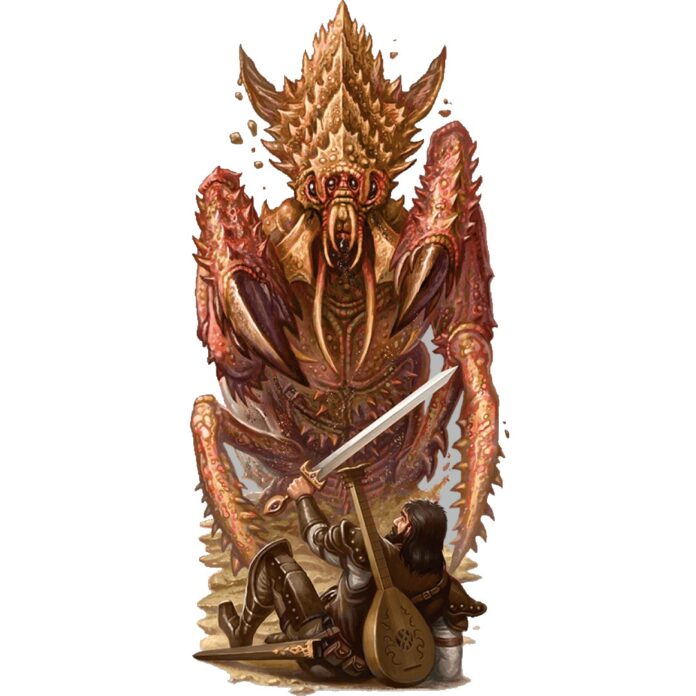Like many Dungeons and Dragons fans, I’m currently part-way through a close reading of the new Monster Manual. The new, high-CR monsters have me excited to draft some new encounters, and I’ve spotted many balance tweaks that warm my Dungeon Master heart. However, there’s one single sentence in the introduction that I take huge issue with. It’s the vaguest, most contradictory piece of advice that I’ve seen in a D&D book for some time.
The sentence in question can be found on page eight in the DnD book’s introduction. A pop-out text box titled ‘Running the Monster’ offers the following tip: “If the monster has a special ability that deals a lot of damage but has a limited number of uses, such as a recharging breath weapon or a spell it can cast only once per day, have it use that special ability as quickly and as often as possible”.
Tactically, this is a terrible idea for many DnD monsters. Take, for example, the Ankheg. Its biggest damage dealer is Acid Spray, which is a Recharge 6 ability. This targets all creatures in a 30-foot-long, five-foot-wide line, forcing them to make a Dexterity save or take 4d6 acid damage (or half as much on a success).
If an Ankheg is fighting in a fairly open space, it’s very plausible that its opponents will be spread out in the first round of combat. Strategically, the best move would be to hold off using Acid Spray until the Ankheg can line up and spray multiple adventurers.
Otherwise, they’ll waste their best ability on a single target, and they may not get a recharge for the remainder of the fight. Why, then, should an Ankheg blow its standout feature on the first turn?
This logic applies to any monster whose ace up their sleeve is a potent spell or ability that can target multiple creatures. The once-a-day Fireball of an Azer or Deathly Wail of a Banshee feels practically wasted if you rush to use it when few players are in range.
This snippet of advice also seems to contradict promises that Wizards of the Coast made during the marketing of the Monster Manual. Back in January, Jeremy Crawford assured us in a D&D YouTube video that Wizards’ approach to challenge ratings had changed.
“A decade ago, the way we calculated CR was focused on ‘if the DM chooses the most powerful option every round, here is the monster’s CR’”, he said. “Many of us as DMs found that sometimes we don’t want to choose the most deadly option every round – and that often led to a monster feeling weaker than it should.” Crawford added that legendary creatures had been tweaked so that, whenever they chose to use their most potent features, they’d still feel appropriately challenging.
The new book’s advice of ‘use your best tools as fast and as often as possible, regardless of the combat’s context’ feels contradictory, and it seems to imply that Wizards’ design philosophies have changed far less than I first thought.
That’s unsurprising, given how much of the new rules feel like the same game but moved slightly to the left. However, a lot of D&D’s changes feel designed to make onboarding easier for new players. Advice like this feels intended to make a new DM’s life easier, but it’s likely to have the opposite effect.
For more Dungeons and Dragons updates, give Wargamer a follow on Google News. We can keep you informed about the year’s DnD release schedule, as well as all you need to know about DnD classes and DnD races.
Source: Wargamer




